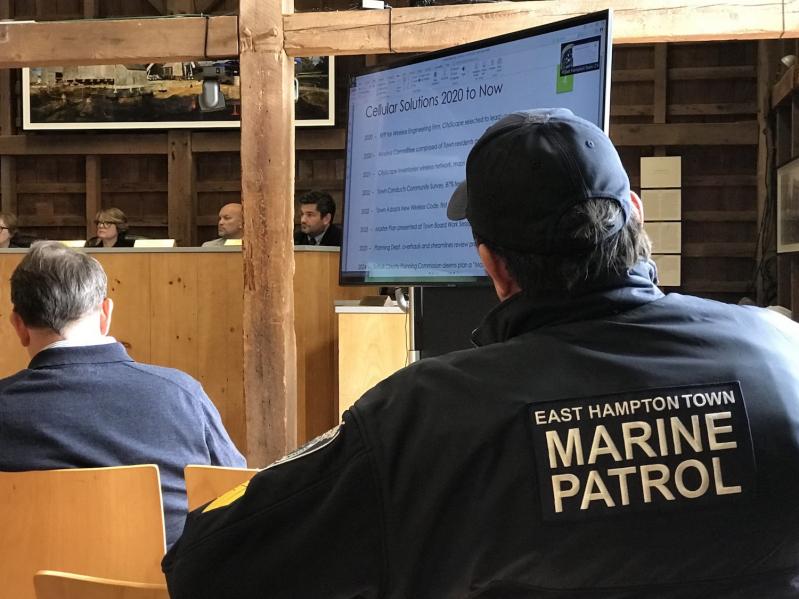Anchors have long had a place in our culture: on logos, beer bottles, and news programs. However, lately, it’s the unheralded mooring that has been the subject of local discussion. In March, Sag Harbor Village sought to formalize mooring in its outer management area, and at Tuesday’s East Hampton Town Board work session, the board discussed legislation that would help it control mooring in town waters, specifically Lake Montauk.
(Other mooring fields in the town are under the jurisdiction of the town trustees.)
Part of the challenge is to define the different ways people use moorings, said Councilman David Lys. “There is a gray area here. There are new technologies, we’re trying to catch up.” Part of the new legislation changes the definition of mooring to include anchors that are left in the same position for more than two weeks.
“Over the years we’ve had people anchoring and living in Lake Montauk without a mooring permit, and that concerns us as far as waste disposal goes,” Tim Treadwell, the town’s senior harbormaster, said in a phone call. “They would wiggle out of our requirements by saying they were anchored, not moored, so we couldn’t write them a ticket for not having a mooring permit. This legislation solves that problem.”
“We’re seeing more commercial activity on the water,” said Councilman Tom Flight. “Do we have a cap on the numbers of moorings we’re willing to allow, or do you think that’s necessary?” he asked Jason Charron, a harbormaster, at the meeting.
“Boats have to have a certain scope of line to swing,” said Mr. Charron. “It’s really dependent on the space that’s available.”
“Also, water depth,” said Mr. Lys. “No mooring field will be allowed without the harbormaster first inspecting the bottomlands for safety and navigation. We’re mostly not looking to cap but to define transient uses.”
So, while the legislation wouldn’t set a limit on the number of moorings that could be placed (there were approximately 40 in Lake Montauk in 2023), Mr. Treadwell said eventually that’s a possibility. “We haven’t maxed out. If we got to that point, which we may in the future, we could regulate the amount. The biggest thing we would like people to comply with are the discharge locations. The town offers a discharge service, and we hope people use it to keep our waterways clean.” A few tickets were written for illegal dumping in 2023, he said. “It’s tough to catch them in the act. The new code gives us the ability to check any vessel in our town’s waters. The pump-out guys tell us who is pumping and who is not. They’re our eyes and ears on the water. There’s no excuse for these people not to use that service. It’s free.”
He said he would be speaking with Robert Bori, the Sag Harbor Village harbormaster, about Sag Harbor’s new plan to make and hand out village-approved ties that lock a boat’s “Y valve,” essentially its toilet-flushing mechanism. “One of the issues is even finding the Y valve,” said Mr. Treadwell. “An officer has to get in the bilge and crawl around looking for it. Having it marked would make inspections easier.”
The legislation would also create separate categories for moorings based on their usage. So, for example, there is one definition for a mooring used by a commercial fisherman, and another for one used by a business entity.
The town board acknowledged that moorings were being rented despite a specification in the current law that mooring permits are nontransferable. The new legislation changes that. “Some yacht clubs on Lake Montauk are making a lot of money off that service, others do it as a courtesy,” said Mr. Treadwell. “We wanted to codify the practice. So, if the Montauk Yacht Club rents a mooring for $300 a night, they’re no longer just paying the town a $50 mooring permit. It’ll now be $500. We’re raising the rate to get a tiny bit of that money and allow them to do business, but to do it legally.”
The prices of all other mooring permits, for residents, nonresidents, and commercial fishermen, would not be changed by the new legislation. A public hearing on the matter will be held at the April 18 town board meeting.




